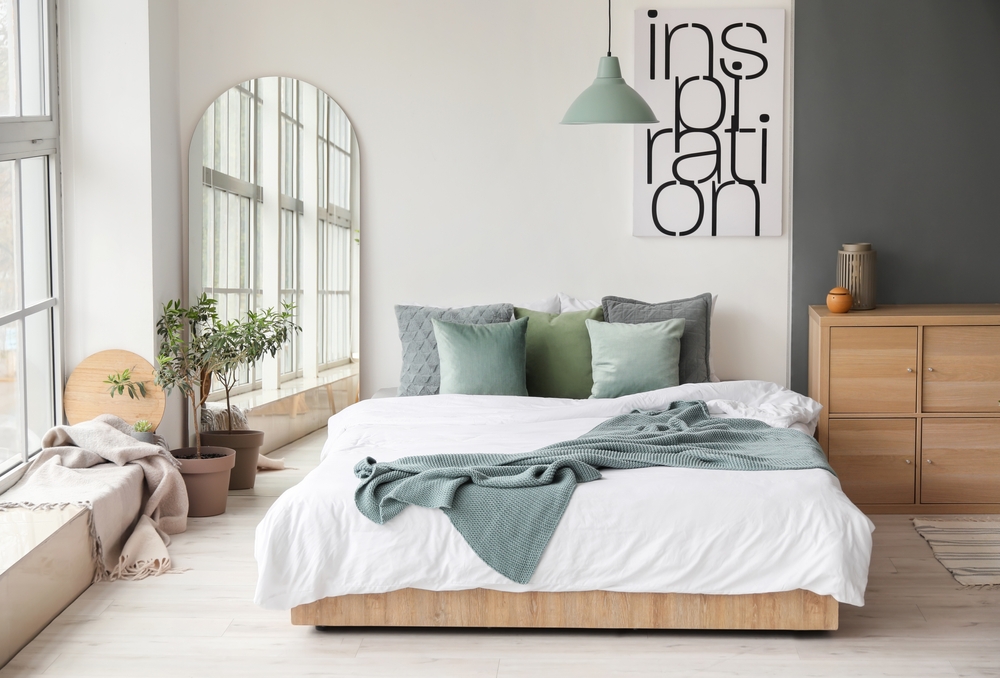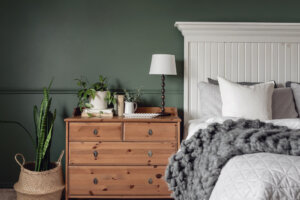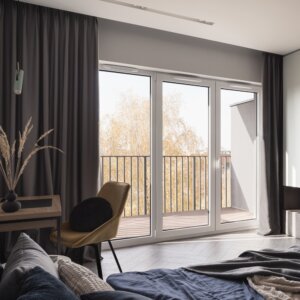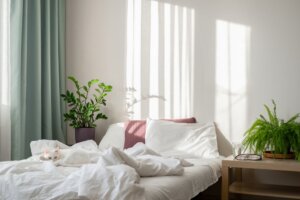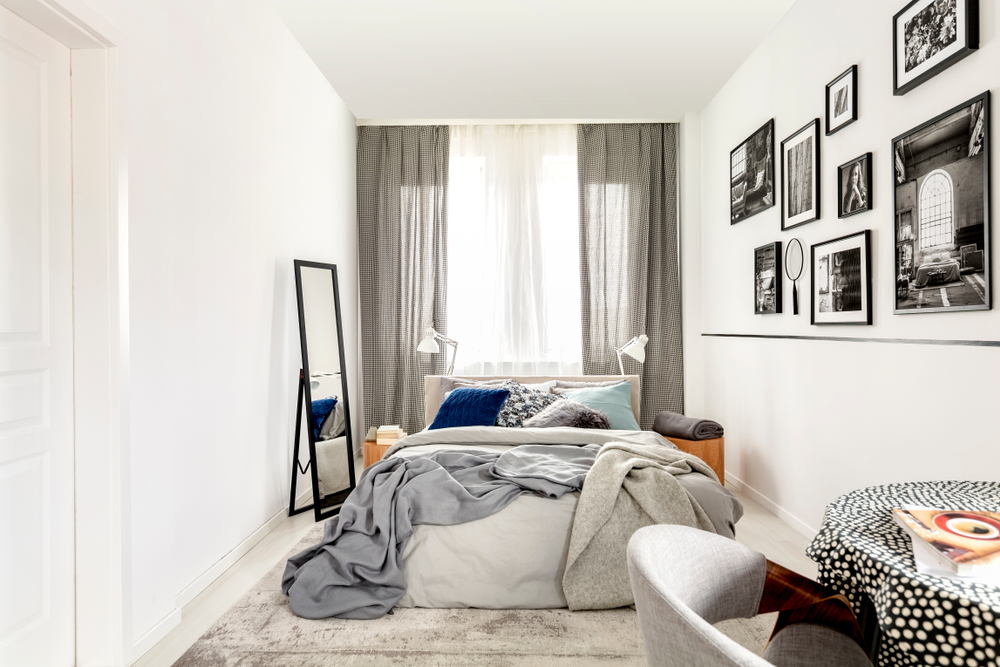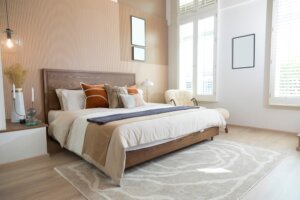Did you know your bedroom design has a huge effect on the quality of sleep you are getting? Many people tend to ignore or overlook their bedroom decor because it is a private space designated for themselves, yet that should be the very reason to give it attention in the first place. Your bedroom should be a space conducive to relaxation, a place that you want to escape to at the end of the day and feel at peace in. The truth is, very few of us actually feel this way about our bedrooms. Follow these tips to help you design your way to a better night’s sleep.
Include Soothing Colours
Time and time again colour psychology has proven that different colours can bring about certain moods and feelings, making your choice of colour in your bedroom very significant. When it comes to designing a space that is meant to encourage a night of good sleep, it has been discovered that the best colours to include are blue, yellow, green, silver and orange. The trick with any colour used in the bedroom is to use them in a soft and subtle way as bright colours are said to increase energy in a room, making it difficult to relax. Be cautious of this when deciding what colour to paint your bedroom walls. If your walls are currently painted a bright colour, try swapping them out for a lighter one.
Install Window Coverings
Most people tend to find it easier to fall asleep in a dark room, so it is important to find blinds or curtains that are capable of shutting out all of the light outside of your home. In addition to it being a huge annoyance, exposure to light has a way of interfering with the secretion of your melatonin, a hormone produced by your body that helps to control your natural sleep and wake cycles. Window coverings are an easy way to add some style to your room while helping you get a better night’s rest.
Reconsider Your Bed Placement
The bed tends to be the most important aspect of your bedroom, as well as the focal point. Although not all bedroom spaces are conducive of such a thing, design psychologist Dr. Sally Augustin claims that “placing our bed against a wall where we have a clear view of the door and, if it’s feasible, the window can make us feel safer and alleviate worry that prevents complete relaxation.” Make sure that you can find a space where your bed looks good, and where you can feel good in it. If you have a tricky layout or are unsure of the best position for your bed, an interior decorator can help you find the right position.
Feel Out Your Flooring
It is recommended that you place a comfy area rug beside your bed as it gives the space a particularly cozy feel. Certain materials are more desirable for this space such as a wool blend, shag, or even faux fur. When it comes to the surrounding floor, it is advised that you stick with wood or another similar material as wall to wall carpeting has a way of trapping many types of allergens that are hard to remove and can affect your ability to sleep. If you do have wall to wall carpeting, consider having it properly cleaned by a professional to help you breathe easier and sleep better.
Ban Clutter
It’s a fact, no one can fully feel relaxed when clutter has completely taken over your room. Nightstands, desks, and stand-alone chairs/couches tend to be where we allow for clutter to build up, so pay extra attention to these spaces, cleaning them regularly. If you find that you are having a hard time managing all of your belongings in such a tiny amount of space, there are so many options for nice and affordable storage solutions to purchase and install. You can also enlist the help of a professional organizer to help you clear the clutter and make better use of your storage.
Eliminate Electronics
It’s likely you have been in front of a screen all day long, so make your bedroom a space where you can completely unplug. When it is time to go to sleep, stash your cell phone completely out of reach so that you will not be tempted to check it if you are having trouble falling asleep. Attempt to keep the television out of the room, as it will just serve as a distraction from your beauty rest. If that is too much to ask, consider adding sliding doors to your built-ins to keep the screen out of reach and out of mind.
Alter the Lighting
There are certain rooms in your house where bright lighting is hugely important, but this is not one of them. Include lower wattage lighting or install dimmers in your bedroom as this offers gentle and soothing lighting that encourages sleep. If you are one to read a chapter or two of your book before bed, install a reading lamp on your bedside table to aid your eyes. Adding a dimmer to your light switches is also another way to install ambient lighting within the space.
Add Some White Noise
If you live off of a busy road or need absolute silence to get any sort of sleep, look into installing something that will create white noise. Things like ceiling fans, air conditioners, and air purifiers are all great additions to any room because of the jobs they perform, but they also can help you tune out all background noise and ensure a good night sleep.
Are you in dire need for bedroom redesign to ensure a better sleep? Try these design tips to create the bedroom of your dreams. If you need any help finding or installing any of the above tips, you can always find a pro on HomeStars to help you. Enjoy catching up on some much-needed zzzs.
Article Updated June 2022.
